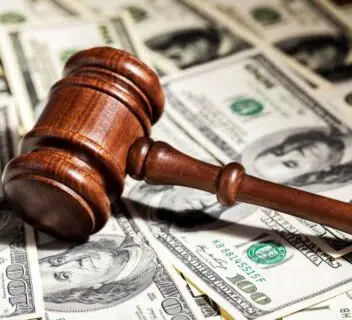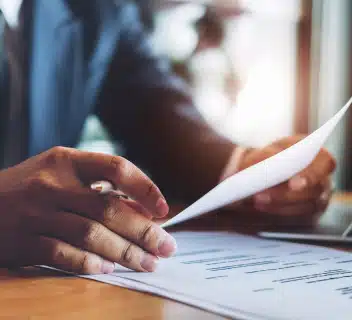Understanding Liability in a Car Accident: Who Is Responsible?
Car accidents can be devastating, both physically and emotionally. Insurance plays a crucial role in determining liability after a car accident. After an accident, one of the most pressing questions is: Who is responsible? Understanding liability in a car accident is crucial to seeking justice and recovering compensation.
This article will guide you through the essentials of accident liability and what steps you should take to protect your rights.
How Do I Know Whether I Have an Actionable Personal Injury Claim for a Car Accident Injury?
To establish liability in a car accident, you must prove that another party’s negligence caused the accident.
You need to prove the accident was someone else’s fault and not yours. Here are the fundamental elements required in order to prove so:
- Duty of Care: Every driver has a legal obligation to operate their vehicle safely and follow traffic laws.
- Breach of Duty: You must demonstrate that the at-fault party failed to uphold their duty of care. For example, running a red light or texting while driving are clear breaches.
- Causation: The breach of duty must directly cause the accident. For instance, if a driver runs a stop sign and collides with your car, their negligence is the cause.
- Damages: You need to prove you suffered losses due to the accident, such as medical bills, lost wages, or property damage.
Examples
A speeding driver rear-ends your car, causing whiplash and damage to your vehicle. Identifying witnesses from other cars involved in the incident can strengthen your case. In this situation, you likely have an actionable claim.
A driver makes a legal turn, but you’re driving above the speed limit and hit them. Liability might be shared, making the claim more complex. The outcome will depend on the laws of the state where the accident occurred.
Understanding these elements is key to determining if you have a viable claim. An experienced attorney can help assess the details of your case and guide you through the process.
How Much Compensation Could I Be Entitled to in a Personal Injury Lawsuit?
The compensation you could recover depends on the extent of your damages. Severe injuries can significantly impact the amount of compensation you are entitled to, as they often result in higher medical costs and long-term care needs.
Here are the common types:
Economic Damages
These cover quantifiable losses:
- Medical Expenses: Insurance companies provide compensation for hospital bills, rehabilitation costs, and future medical care.
- Lost Wages: Compensation for time off work or diminished earning capacity.
- Property Damage: Covers repairs or replacement of your vehicle.
Non-Economic Damages
These address intangible losses:
- Pain and Suffering: Compensation for physical pain and emotional distress as part of a personal injury claim.
- Loss of Enjoyment of Life: If the accident impacts your ability to enjoy hobbies or daily activities.
Punitive Damages
In cases of extreme negligence, such as ignoring traffic laws or drunk driving, punitive damages may be awarded to punish the at-fault party and deter similar behavior. While less common, they can significantly increase the total compensation.
Example
If you’re injured in a crash caused by a distracted driver, your total compensation might include $15,000 in medical expenses, $5,000 in lost wages, and $10,000 for pain and suffering.
In rare cases, punitive damages could add an additional $20,000 or more.
It is crucial to report the accident to your insurance company as quickly as possible to comply with the insurance policy and requirements and prevent any denial of coverage.
Calculating damages often requires thorough documentation and expert testimony to support your claim. An attorney can ensure that all your losses are accounted for.
Who Can I Sue for My Car Accident?
Liability in a car accident isn’t always limited to the other driver. Having experienced lawyers is crucial to determine liability and navigate complex claims.
Depending on the circumstances, several parties might share responsibility. Here are the potential defendants:
- The At-Fault Driver: The most common defendant, especially if they were speeding, distracted, or otherwise negligent.
- Third-Party Drivers: If another driver’s actions indirectly caused the accident, they could share liability.
- Employer of the Driver: If the at-fault driver was working at the time (e.g., a delivery driver), their employer might be liable under “vicarious liability.”
- Auto Manufacturer: Defects in the vehicle, such as faulty brakes or airbags, could make the manufacturer responsible.
- Government Entities: Poorly maintained roads, missing signage, or dangerous intersections could make a city or state liable.
Example
If you’re hit by a commercial truck, you might sue the driver, their employer, and the truck manufacturer if a mechanical failure contributed to the crash.
The police will evaluate the scene and develop an official accident report to assess fault and liability among the involved drivers.
Identifying all liable parties for financial damages can increase your chances of recovering adequate compensation.
What Happens If Multiple Defendants Are At-Fault? Can I Hold Them All Responsible?
When multiple parties are at fault, you can hold all of them responsible. States require drivers to follow certain requirements, such as carrying liability insurance, to ensure safety on the roads.
This is known as joint and several liability. Each defendant can be held liable for the full amount of damages, or their share may be determined based on their percentage of fault.
Advantages of Naming Multiple Defendants:
- Maximized Recovery: If one defendant cannot pay, others may cover the shortfall. It is crucial to protect your rights no matter who is liable, as timely action can significantly impact the recovery of damages and legal outcomes.
- Stronger Case: Bringing in multiple parties can strengthen your claim by showing comprehensive evidence of fault.
Example
Imagine a scenario where a driver runs a red light and a faulty airbag fails to deploy, worsening your injuries.
Drivers have an obligation to exercise caution and care while behind the wheel to prevent such accidents. Both the driver and the car manufacturer could be held liable for your damages.
Joint and several liability laws vary by state, so consulting an attorney who understands the local regulations is essential to understand your options and build a strong case.
What Happens If I’m Partially At-Fault for My Accident?
Fault isn’t always clear-cut. Learn more about the legal aspects of negligence and liability to better understand your situation.
If you share responsibility for being involved in the accident, the outcome depends on the fault doctrine applied in the state in which the accident took place:
Contributory Negligence
In states with this type of fault doctrine, if you’re even 1% at fault, you cannot recover any compensation.
Example: If you were speeding and another driver ran a stop sign, you might be barred from recovering damages in a contributory negligence state.
Comparative Negligence
Pure Comparative Negligence: You can recover damages even if you’re 99% at fault, but your compensation is reduced by your fault percentage. States also require drivers to follow certain requirements, such as carrying liability insurance, to ensure safety on the roads.
Modified Comparative Negligence: You can only recover damages if you’re less than 50% or 51% at fault, depending on the state.
Example: If you’re 20% at fault and your damages total $50,000, you could still recover $40,000 in a pure comparative negligence state.
Joint and Several Liability
In cases with multiple defendants, each party’s fault is determined. Some states allow you to recover the full amount from any defendant, regardless of their fault percentage.
When seeking compensation for serious injuries you sustained in car accidents, filing a personal injury claim is essential. Understanding these doctrines is critical to managing your expectations and pursuing a successful claim. An attorney can help navigate these complexities.
If you’ve been in an accident, taking proactive steps can significantly impact the outcome of your claim. Here’s what to do:
- Call Emergency Services: Always report the accident to the police. An official report can be critical for your case.
- Document the Scene: Take photos of the accident scene, vehicle damage, road conditions, and any visible injuries.
- Gather Contact Information: Exchange contact and insurance information with the other driver. If there are witnesses, collect their names and contact details.
- Seek Medical Attention: Even if you feel fine, get a medical evaluation. Some injuries may not show symptoms immediately.
- Notify Your Insurance Company: Promptly report the accident to your insurer to avoid complications or denial of coverage.
- Consult an Attorney: A legal expert can guide you through the complexities of your claim and ensure your rights are protected.
Common Mistakes to Avoid After a Car Accident
- Admitting Fault: Avoid making statements that could be interpreted as admitting fault. Stick to the facts when speaking to the police or insurance adjusters.
- Delaying Medical Care: Waiting to seek treatment can harm your health and weaken your claim.
- Not Keeping Records: Save all documents related to the accident, including medical bills, repair estimates, and communication with insurers.
- Accepting the First Settlement Offer: Initial offers from insurance companies may not fully cover your damages. Consult an attorney before agreeing to any settlement.
Contact 1-800-THE-LAW2 for a Free Consultation
If you’ve been involved in a car accident, understanding your rights is the first step toward recovering compensation. It is crucial to seek legal assistance as quickly as possible to ensure your rights are protected.
Whether you’re dealing with a negligent driver, defective vehicle, or government negligence, navigating liability in a car accident can be complex.
Contact 1-800-THE-LAW2 today for a free consultation. The experienced attorneys in our network can evaluate your case, help you understand accident liability in a car accident, and guide you through the legal process. Don’t wait—take the first step toward holding the responsible parties accountable.




